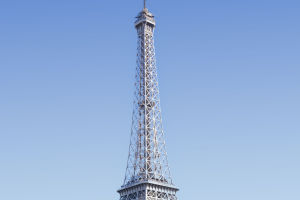Alaska's winter offers not only the breathtaking aurora borealis but also an experience you won't want to miss: glacier hiking. It's a gift to step into the icy-blue space of the outer world, where snow has accumulated in the same place for millions of years and is finally presented to the world.
Alaska boasts more than 100,000 glaciers that cover 4.5% of the state, an impressive 29,000 square miles. The Malaspina Glacier in Rangel St. Elias National Park and Nature Preserve spans about 850 square miles, almost the same size as the state of Rhode Island.
The Matanuska Glacier is located just 2.5 hours from Anchorage, 50 miles (80 km) west of the Palmer area, on the scenic yet lightly traveled Glenn Highway. To see the glacier, you can either stop along the highway to take photos or drive close to the edge of the glacier to get the best views.
If getting close isn't enough, you can also take a glacier hike, ice climbing course, or rafting trip (either scenic or whitewater). The sheer walls of ice, deep blue holes (known as moulins), and creaking ice make for an unforgettable experience.
To reach the Matanuska Glacier from downtown Anchorage, drive north on scenic roads to the 27-mile-long frozen ancient river that is the glacier. Thousands of years ago, this massive glacier was hidden in the Matanuska Valley. You'll spend about two hours hiking to reach the glacier, during which your guide will explain how the Matanuska Glacier came to be and how it shaped the landscape of the Matanuska Susitna Valley. You'll also get to explore the blue meltwater pools and awe-inspiring ice formations.
In addition to Matanuska, there's another stunning glacier to see: Knik Glacier. It's like a backdrop for another world. The average thickness of the Knik Glacier is about 200 feet, and it's about three miles long, extending toward the head of the Knik River. Knik Glacier once blocked Lake George Canyon before the 1964 earthquake that led to the formation of Lake George. Each spring, snow erodes the glacier ice dam, and up to 150 million gallons of water per minute will begin to pour into the canyon, sometimes forming a 150-foot wall of water. Visitors can enjoy this natural wonder on hovercraft, all-terrain vehicles (ATVs), or sightseeing tours.
Knik Glacier is located on the northern edge of the Chugach Mountains in Alaska. It's over 28 miles long and five miles wide, making it one of the largest glaciers in central Alaska. Often referred to as Alaska's "Sunshine Glacier," its unique microclimate or "rain shadow" creates a truly diverse ecosystem. The northern desert is surrounded by snow-covered peaks, hanging glaciers, and waterfalls.
No matter where you live in the world, you have the opportunity to see Knik Glacier, which has been the focus of Hollywood for over a decade. Big-budget features like Star Trek IVith big-budget features like Star Trek IV and Snow Crash were filmed here! Many documentaries, commercials, music videos, and even reality shows have used Knik Glacier as an alternate world backdrop. Every year film crews arrive to try and capture the timeless beauty of the film.


